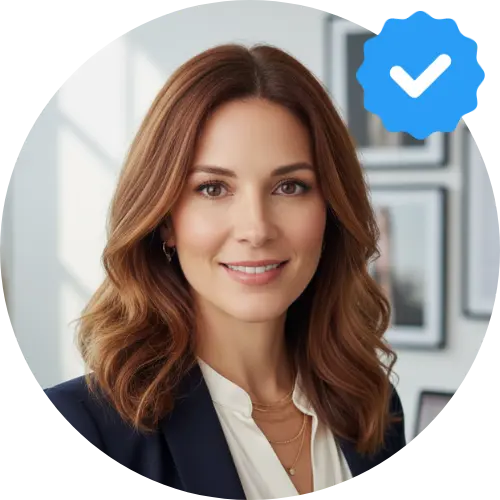Picture this: it's 1943, and Rosie the Riveter is flexing her biceps on factory posters while Betty Grable's legs are literally insured for a million dollars. Fast forward to today, and we've got Ashley Graham gracing Sports Illustrated covers and Lizzo teaching us that confidence is the sexiest accessory you can wear 💪. But how exactly did we get from pin-up perfection to plus-power celebration? Buckle up, because this journey through body positivity history is wilder than you might think.
The Pin-Up Era: When Curves Had Their Moment (Sort Of)
Let's be real - the 1940s and 50s weren't exactly the dark ages of body acceptance. Those iconic pin-up girls? They actually had curves, hips, and what we'd call "real bodies" today. Betty Grable, Rita Hayworth, and later Marilyn Monroe weren't size zeros by any stretch.
But here's the thing - even then, there were strict rules about what made a body "acceptable." Sure, you could have curves, but they had to be the *right* curves in the *right* places. Your waist better be tiny, your skin flawless, and don't even think about cellulite or stretch marks showing up in those carefully posed photos.
I've always found it fascinating how pin-up culture was simultaneously empowering and restrictive. These women were celebrated for their sexuality and confidence, but only within very specific parameters. It's like being told you can be powerful, but only if you fit into this particular box.
The Reality Behind the Glamour
What most people don't realize is that even those "curvy" pin-up stars were often corseted, airbrushed (yes, even back then!), and posed in ways that created impossible standards. The average woman in the 1950s was actually larger than many of these so-called "full-figured" icons.
And let's talk about diversity - or the complete lack thereof. Pin-up culture was overwhelmingly white, straight, and able-bodied. If you didn't fit that mold, you basically didn't exist in mainstream beauty standards.
The Twiggy Revolution: When Thin Became Everything
Then came the 1960s, and everything flipped upside down. Enter Twiggy - all 91 pounds of her - and suddenly curves were out, boyish figures were in. This shift wasn't just about fashion; it reflected massive cultural changes happening around women's roles in society.
But tbh, this era was rough for body acceptance. The message became crystal clear: smaller was better, and if you couldn't achieve that naturally, well, that's what diet pills and extreme measures were for. The diet industry absolutely exploded during this time, and eating disorders started becoming more recognized (though definitely not well-understood).
What's wild is how this thin ideal persisted for *decades*. From the 70s through the 90s and into the 2000s, the message remained pretty consistent: take up less space, be smaller, disappear a little bit more each day.
The Supermodel Era: Perfection Gets Professional
The 80s and 90s brought us supermodels, and with them, an even more unattainable standard of beauty. These weren't just thin women - they were tall, thin, perfectly proportioned, and genetically blessed in ways that maybe 0.01% of the population could relate to.
I remember growing up during this era and feeling like my body was fundamentally wrong because it didn't look like Cindy Crawford or Naomi Campbell. And I wasn't alone - research from this period shows that body dissatisfaction among women reached all-time highs.
The Internet Changes Everything: Early 2000s Awakening
Here's where things get interesting. The early 2000s brought us the internet, and with it, the first real challenges to mainstream beauty standards. Suddenly, people who'd never had a voice in beauty conversations could start their own blogs, share their own photos, and create communities around different body types.
The fat acceptance movement, which had actually been around since the 1960s, finally found a platform to reach broader audiences. Activists like Marilyn Wann and organizations like NAAFA (National Association to Advance Fat Acceptance) could suddenly connect with people worldwide.
But let's not romanticize this period too much. The early 2000s also gave us "heroin chic," size zero obsessions, and some of the most toxic diet culture messaging we'd ever seen. It was like a battle between old and new ways of thinking about bodies was happening in real-time.
The Dove Campaign: Mainstream Goes "Real"
In 2004, Dove launched their "Real Beauty" campaign, and ngl, it was pretty revolutionary for its time. Seeing women of different sizes, ages, and ethnicities in underwear ads was shocking because it was so rare.
Now, we can critique this campaign all day (and many have), but at the time, it felt like a breath of fresh air. It opened up conversations about what "real" bodies look like and challenged the advertising industry to think differently about who they were targeting.
Social Media: The Game Changer
Then came Instagram, and everything changed again. Suddenly, anyone could be their own model, photographer, and brand. The body positivity movement found its perfect platform, and influencers started building massive followings by simply existing in bodies that mainstream media had ignored.
People like Tess Holliday, Jessamyn Stanley, and Megan Crabbe started showing up in feeds everywhere, living their lives unapologetically in bodies that had been deemed "unacceptable" by traditional standards. And you know what? People were *hungry* for this representation.
But social media also brought new challenges. The same platforms that democratized beauty also created new pressures. Now instead of just comparing yourself to magazine models, you could compare yourself to literally everyone on the internet 24/7.
The Hashtag Revolution
Hashtags like #bodypositivity, #effyourbeautystandards, and #honormycurves created virtual communities where people could share their stories, struggles, and victories. These movements gave people language to talk about their experiences with body image in ways that felt empowering rather than shameful.
What I love about this era is how it expanded beyond just size acceptance. The conversation started including disability, gender identity, age, race, and so many other aspects of human diversity that had been excluded from beauty conversations.
The Backlash and Evolution: Where We Are Now
Of course, with any movement this powerful, there was bound to be backlash. Critics started arguing that body positivity was "promoting obesity" or "encouraging unhealthy lifestyles." These arguments completely missed the point, but they were loud and persistent.
In response, many activists started shifting toward "body neutrality" - the idea that you don't have to love your body all the time, you just need to respect it and treat it well. This felt more realistic and sustainable for many people who found the "love yourself" message overwhelming.
Recent research by Dr. Tracy Tylka has shown that body positivity interventions can actually improve both mental health and physical health outcomes, debunking many of the critics' concerns. Turns out, when people feel good about themselves, they're more likely to engage in healthy behaviors - who would've thought? 😉
Intersectionality Takes Center Stage
One of the most important developments in recent years has been the recognition that body positivity can't be separated from other social justice issues. Activists like Sonya Renee Taylor have pushed the movement to address how racism, classism, ableism, and other forms of oppression intersect with body image.
This evolution has made the movement more inclusive but also more complex. It's no longer just about accepting different body sizes - it's about challenging all the systems that tell certain bodies they're worth less than others.
The Science Behind the Movement
Here's what's really cool - research has started catching up with what body positivity activists have been saying all along. Studies show that weight stigma is actually more harmful to health than weight itself. Dr. Lindo Bacon's work on Health at Every Size has demonstrated that focusing on health behaviors rather than weight loss leads to better outcomes across the board.
And get this - research published in the Journal of Health Psychology found that people who practice body acceptance are more likely to engage in intuitive eating, regular physical activity, and have better mental health outcomes. So much for the "promoting unhealthy lifestyles" argument, right?
Plus-Power: What Body Positivity Looks Like Today
Today's body positivity movement is more nuanced, more inclusive, and more powerful than ever. It's not just about loving your body (though that's great if you can get there) - it's about recognizing that all bodies deserve respect, dignity, and access to the things that make life good.
We're seeing this play out in fashion, with brands finally making clothes in extended sizes that don't look like potato sacks. We're seeing it in healthcare, where more providers are being trained in weight-neutral approaches. We're seeing it in fitness, where the focus is shifting from punishment to joy and movement.
But maybe most importantly, we're seeing it in everyday conversations. People are questioning diet culture, challenging beauty standards, and supporting each other in ways that would've been unimaginable even ten years ago.
The Next Generation
What gives me the most hope is watching younger generations navigate body image. Sure, they still face pressures (hello, TikTok beauty filters), but they also have tools and language that previous generations didn't have. They're calling out fatphobia, celebrating diverse bodies, and refusing to accept the limitations that were placed on older generations.
Gen Z is literally rewriting the rules about what bodies can do, wear, and be. And honestly? It's about time.
Frequently Asked Questions
Is body positivity just about being overweight?
Not at all! Body positivity includes people of all sizes, abilities, ages, races, and gender identities. While the movement has strong roots in fat acceptance, it's evolved to challenge all beauty standards that make people feel less than worthy.
Does body positivity discourage healthy habits?
Research actually shows the opposite. When people feel good about their bodies, they're more likely to take care of them through joyful movement, intuitive eating, and regular healthcare. Shame and self-hatred are terrible motivators for lasting healthy changes.
How can I practice body positivity if I don't love my body?
You don't have to love your body to practice body positivity! Start with body neutrality - treating your body with basic respect and kindness. Focus on what your body does for you rather than how it looks, and remember that your worth isn't determined by your appearance.
What's the difference between body positivity and body neutrality?
Body positivity focuses on loving and celebrating your body, while body neutrality is about having a neutral, respectful relationship with your body. Both are valid approaches, and many people find body neutrality more achievable as a starting point.
How has social media impacted body positivity?
Social media has been both a blessing and a curse for body positivity. It's democratized beauty standards and created communities for marginalized bodies, but it's also created new pressures and comparison opportunities. The key is curating your feeds mindfully and following accounts that make you feel good about yourself.
Bottom Line
From pin-ups to plus-power, the journey of body acceptance has been messy, complicated, and absolutely necessary. We've gone from celebrating only one very specific type of "curvy" body to recognizing that every body deserves respect and dignity.
The movement isn't perfect - it's still evolving, still learning, still growing. But what it's given us is something revolutionary: permission to exist in our bodies without apology. Permission to take up space. Permission to believe that our worth isn't determined by our dress size or our ability to fit into someone else's idea of beautiful.
And tbh, that's pretty powerful stuff. Your body - whatever it looks like, whatever it can or can't do - is worthy of respect, care, and yes, even celebration. That's not just feel-good fluff, that's a radical act of resistance against systems that profit from your self-doubt.
So here's to the pin-up girls who started conversations about sexuality and power. Here's to the activists who refused to be invisible. Here's to the influencers who showed up authentically online. And here's to you, for being part of a generation that's rewriting the rules about what bodies can be and do 💖.




